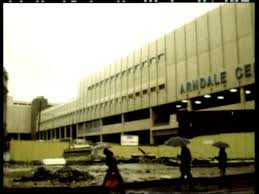What to do in Manchester? Visit Old Trafford.
We get asked a lot What to do in Manchester? Well obviously our food tour. That goes without saying. But what else? Well you can’t come all the way to Manchester without going and having a look at Old Trafford.
The Theatre of Dreams is home to the world’s most famous sports team. Manchester United have been playing their home games here since 1910. The stadium is easy to get to. You can hop on the metro from town and get off at Old Trafford. It’s then a 5 minute walk past the cricket ground (the other Old Trafford).
Manchester United is the thing that we are most famous for in Manchester. The club are the most successful English team having won 20 league titles. Despite having a barren spell (by their standards) of late, millions of people still tune in to watch their games. The lucky 70,000 or so get to watch live here at Old Trafford.
How you can visit Old Trafford.
If you aren’t lucky enough to get a match ticket you can still visit the stadium for a tour. The 2 hour experience takes you into the bowels of this huge stadium. You’ll learn the history of the club from your guide who is normally a matchday steward. These guys know everything there is to know about United and are great fun to have a chat with.
You’ll get a chance to explore the museum which houses some fascinating items. And of course no visit would be complete without visiting the famous trophy room. If you’re lucky enough you might be able to sit in the dugout and have your photo taken. There’s always something going on at Old Trafford even in the close season. Take your camera you never know who you might meet.
If you have a larger group you can have a private tour. You can find out more here.
What to do in Manchester? Manchesterbites food tours.
If you’re looking for the best things to do in Manchester, try our food tours. We take small groups on tours around the city. Taking in hidden food gems along the way. Lear the story of Manchester through the eyes of the people that make it tick. You can find out more at www.manchesterbites.com
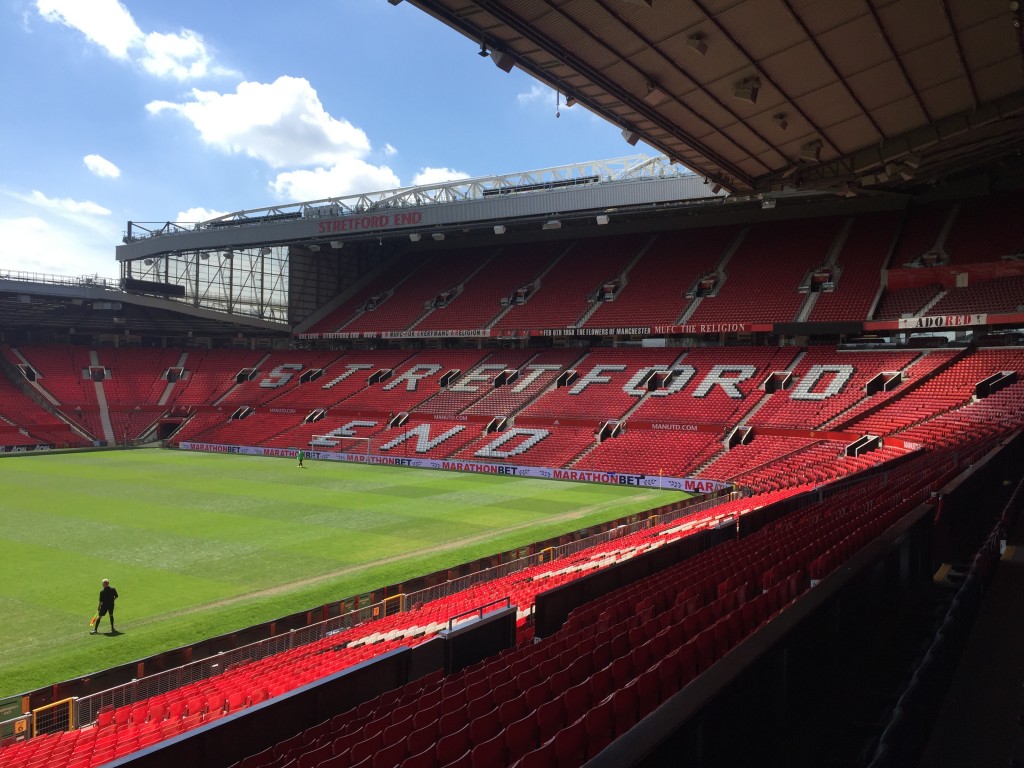
Mother of the Sea. How Manchester saved Sushi.
We like talking about Manchester inventions and those Mancunians that have changed the world. Here’s a story of a Manchester food hero that dates back to the early 1900’s. This might just change the way you think about sushi.
In 1901 Kathleen Drew Baker was born in Leigh. She spent her childhood learning about horticulture and gained a scholarship to study at the University of Manchester. She graduated in 1922 and began working as a lecturer at the university.
It was during her time as a lecturer and researcher that she made a crucial discovery. This discovery wasn’t really to effect the food community in Manchester. But it would make a huge difference to life in Japan. Kathleen Drew Baker had discovered a way to farm seaweed. In particular the type of seaweed that is used in sushi.
Nori seaweed cultivation had almost stopped in 1950’s Japan. Due to harsh monsoons and lack of seeds in Nori the Japanese were at a loss for how to farm it. Drew Baker had discovered that seashells could act as a host environment to allow the seaweed to grow.
Mother of the Sea
Once her work was shared to scientists in Japan they immediately got to work farming Nori.
Kathleen Drew Baker never visited Japan and sadly died in 1957. She had no idea how important her findings were to a country she had never even seen.
Today Japan still celebrates Kathleen. On April 14th there is a Drew festival to celebrate her life. She is affectionately known as “The Mother of the Sea.” In Uto Kumamoto there is a statue dedicated to her memory.
So next time you are enjoying sushi you can remember Kathleen. Another food hero of Manchester.
Our Manchester food tours are a great way to explore Manchester. If you’d like to learn more go to www.manchesterbites.com
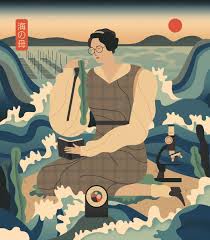
A Manchester Food Tour in the Northern Quarter
A Manchester food tour in the Northern Quarter is the perfect way to explore this great city. But what is the Northern Quarter, and what makes it so good for a food tour?
Manchester’s Northern Quarter sits in the middle of Piccadilly and Ancoats. In recent years it has become the city’s trendiest area. A wealth of bars and restaurants have taken over. What was once a forgotten part of Manchester is now a must-visit.
The Northern Quarter is the creative heart of Manchester, and it offers dining experiences and activities suitable for all budgets. But more than the range of choices on offer or the wallet-friendly restaurants and pubs, the atmosphere of the Northern Quarter is what makes it so special.
As you explore this historic district, a sense of tradition and community spirit is always there.
If you’re interested in getting to know this area for yourself, why not join Manchester Bites for our Canals to Canapes Walking Food Tour in the Northern Quarter?
The Story of Manchester’s Northern Quarter
As with so many stories from Manchester’s past, we must begin with the Industrial Revolution, which was spearheaded in Manchester. The city’s first cotton mill was opened in 1783 in what would later become known as the Northern Quarter.
By 1853 this area had 108 mills and was a major hub of activity – the area was right bang in the centre of the industrialisation of Britain, a process that would, in time, affect the entire world.
People lived within very close proximity to each other. Freidrich Engels painted a bleak picture of the area, describing it as “dirty, old and tumble-down” in his work The condition of the working class in England. But for all its squalor, the area was hugely significant.
Manchester at this time was the engine room of the British Empire, and it was the working people of Manchester and similar industrial towns that kept everything in motion.
During Victorian times, the area became a popular entertainment spot. Tib Street was famous for its pet shops, and people would stroll up and down the road looking at all the animals on display.
The shops of the Northern Quarter would stay open late into the night, and with time the area came to be regarded as a bohemian centre.
In this cultural landscape, the Northern Quarter also gained a reputation for being a hotbed of political activity.
Manchester has long had a reputation for fighting for social justice and the Northern Quarter was the perfect place for preachers, workers, and political activists to make speeches to sympathetic (and occasionally hostile) crowds.
We strongly recommend checking out the People’s History Museum for anyone interested in Manchester’s political history.
The Decline Of The Northern Quarter
It was in the 90’s that the council devised the name Northern Quarter. Creative industries were encouraged to the In the wake of the senseless destruction of WWI, many of Manchester’s industries started to collapse.
Then after WW2, Manchester’s priorities had to be concentrated on rebuilding parts of the town destroyed by bombing and the Northern Quarter was largely neglected.
For much of the 20th century, the area’s story was economic decline. The factories and shops were closed to be replaced by cheap housing. And yet, the rough-and-ready charm of the place was what would eventually guarantee its revival and renovation.
In the 1990s, the Manchester music scene brought newfound attention to many of the neighbourhoods in Manchester that needed some love. And none benefited quite like the Northern Quarter. Suddenly the area was brimful with clubs, trendy boutiques, record shops, and cheap cafes.
The multicultural nature of the area would also lead to the opening of several restaurants specialising in international foods, such as the legendary This & That Cafe, which does some of the best curries in the whole city to this very day.
What Makes The Northern Quarter So Good For A Food Tour?
In the 90s, the local council devised the name Northern Quarter. Creative industries were encouraged to the area. Design businesses, architects, and start-ups made the Northern Quarter their home. The district recaptured some of that bohemian charm that had defined it during the Victorian period.
With such industries came great cafes and restaurants. What had been a quiet, forgotten part of Manchester was re-born.
The Northern quarter now has a plethora of food businesses to choose from. Asian, American, African, or old-fashioned, no-frills British food is all within a short stroll, and much more besides.
The buildings have been relatively untouched since the 18th century. So much so that the Northern Quarter is often used as the backdrop for films and tv series.
When you walk the streets of the Northern Quarter, you really get a sense of Manchester’s distinctive character; the architecture, eateries, cultural spaces, and, most importantly, people provide continuity, a connection to the area’s earliest days.
This mixture of the old and new makes the Northern Quarter the perfect place to enjoy an unforgettable Manchester food tour.
If you have any questions concerning our tours or services, please feel free to get in touch.
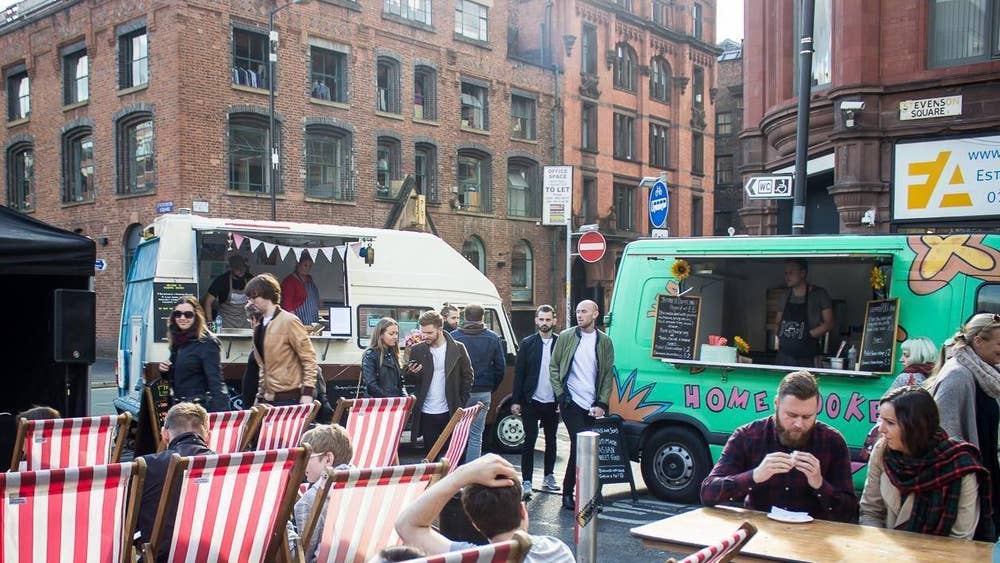
Bury black pudding. Another Manchester favourite.
If you’re visiting England for the first time you will definitely have to try an English breakfast. A good, old fashioned English fry up is a must try when you’re here. They are not the healthiest of things to eat. But they are perfect for a lazy Saturday morning. Especially when you’re in Manchester, as we claim to be the home of one of the most important ingredients.
Another Manchester food invention
One of the best things about a fried breakfast is black pudding. There’s a market town to the north of Manchester called Bury. It’s here where the Black Pudding was invented in 1810. It was probably invented a lot earlier than that but that’s the longest back we can trace it.
Black pudding is essentially blood sausage. It was common to use every single part of the animal back in the day. Not wanting to waste the blood, butchers created the black pudding. A mixture of pigs blood, cereals and seasonings are squeezed into pork skin. The sausage is then fried and served. It makes a perfect addition to an English breakfast. You can find different examples around the world. Morcilla in Spain and Blutwurst in Germany are both types of black pudding.
Where you can try the original Black Pudding in Manchester.
The market town of Bury is not as affluent as it used to be. It has a famous market there where you can buy black pudding. The Bury Black Pudding company is now the sole surviving business that still makes the pudding in Bury. You can visit their stall at the market. Or you can buy their puddings at major supermarkets around Manchester. If you want a really good breakfast experience we recommend here, https://www.thekoffeepot.co.uk/menus
Since the 1980’s there has been a black pudding throwing competition. The event is held in Ramsbottom near Bury. Contestants have to throw 3 black puddings at a stack of Yorkshire puddings. Whoever knocks the most Yorkshire puddings down wins. If you are in Manchester on the second Saturday of September you should go and check it out.
If you’re looking for a unique tour of Manchester, come and join our food tours. www.manchesterbites.com for more details

Vimto: A Manchester Innovation
Manchester has a long history when it comes to inventing things. The computer, graphite, commercial railways, indie music, football…the list goes on and on. One of our food and drink gifts to the world has been Vimto.
If you’ve never tried it, Vimto is a fruit-flavoured soft drink with true cult status. It contains grapes, berries and blackcurrants (and also, admittedly, lots of sugar).
In the UK we have a similar drink called Ribena. If you speak to anyone from Manchester you’ll realise that we are If Ribena is the UK’s most iconic berry flavoured drink, Vimto is the stylish person’s alternative choice.
Preferred in Manchester to just about any other soft drink, Vimto’s reputation across the rest of the UK tends to be defined by people who haven’t tried Vimto, and people who love Vimto and champion it at every opportunity!
A History of Vimto
At the start of the 20th century, a man called John Nichols used to sell herbs, spices and medicines in Manchester. He developed the recipe for what he called Vim Tonic. It was originally a medicinal drink but came to be regarded as a soft drink in 1913 and with that, the name was shortened to Vimto.
Due to the popular temperance movement of the period, which encouraged people to lead teetotal lifestyles, soft drinks were all the rage. And Vimto successfully made a name for itself within this culture.
It wasn’t, though, until the 1990s that Vimto really established itself as the trendy person’s booze-free tipple of choice. British culture in the 90s was defined by a slightly unruly, anti-establishment attitude. With Brit Pop acts like Blur, Pulp, and Oasis (yes, another Manchester export!) at the top of the charts, and anarchical TV shows like TFI Friday and The Word being watched by millions, anything too middle-of-the-road was, well, a bit naff.
Well, the marketing guys at Vimto had their finger on the pulse because the brand enlisted the perfect representative to advertise their brand: the slightly rude cartoon poet, Purple Ronnie. Created by writer and illustrator Giles Andreae, Purple Ronnie became a rogueish, much-loved figure on British TV, famous for his love of partying and innuendo-laden poems. One of his rhymes went as follows:
Vimto is a smashing drink
So why not have a slurp?
It’s full of fizzy bubbles
To make your bottom burp
In 2003, Purple Ronnie walked off into the sunset and Vimto adopted the new slogan “Shlurpling the Purple”.
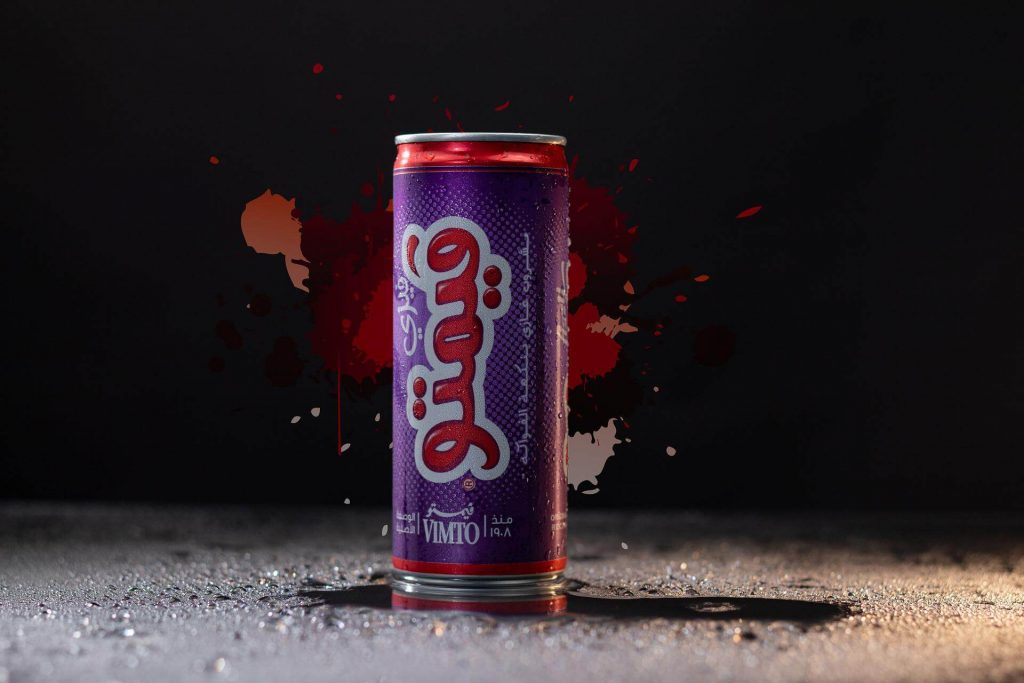
Vimto in the Middle East, and Around the World
Over the years the popularity of Vimto has gone from the Manchester streets to all around the world. An interesting tale relates to the Middle East and the Arabian Peninsula. During Ramadan, the drink becomes incredibly popular. This is probably due to the high sugar count helping people through their daily fasts. The Arabian Peninsula is the biggest foreign market and sales boom during the holy month, with the drink being the biggest selling beverage in certain countries.
Vimto’s popularity in this part of the world stretches back an impressive 80 years, and that popularity only seems to be growing.
Variations of the Drink
The good people at Vimto have never rested on their laurels, and throughout the drink’s history, many different varieties have been introduced. The standard Vimto is sold in both pre-mixed carbonated and cordial versions, with the latter being the more popular choice. In the winter months, the cordial version is often added to hot water to create a sweet, warming drink.
Through the decades Vimto has also released jelly babies, ice lollies, and other sweets featuring the distinctive brand flavour. And the drinks range often makes room for limited edition guest flavours, such as Cherry Vimto and Strawberry Vimto.
For those who haven’t been inspired by Vimto’s early temperance movement origins, you can use the drink as an inspiration and make a pretty moreish cocktail known as a Cheeky Vimto. Although the cocktail doesn’t feature actual Vimto as an ingredient, the blending of port wine and Blue WKD creates an alcoholic drink that captures something of Vimto’s unique berry blast.
Finally, if it’s sunny out, you may want to toss Vimto into a blender with ice cream and milk to create an indulgent Vimto milkshake.
The Vimto Statue
Anyone wanting to explore the culture surrounding Vimto in Manchester today should head to Granby Row in Manchester city centre where they’ll find a massive wooden sculpture of a Vimto bottle. This massive tribute to a Manchester classic is always a popular stop on our food tours of Manchester.
Would you like to learn more about Manchester and its incredible food scene? Are you looking for the best things to do in Manchester? If so, book a food tour with us and let us show you our city!
If you have any questions or comments regarding our tours, please get in touch.
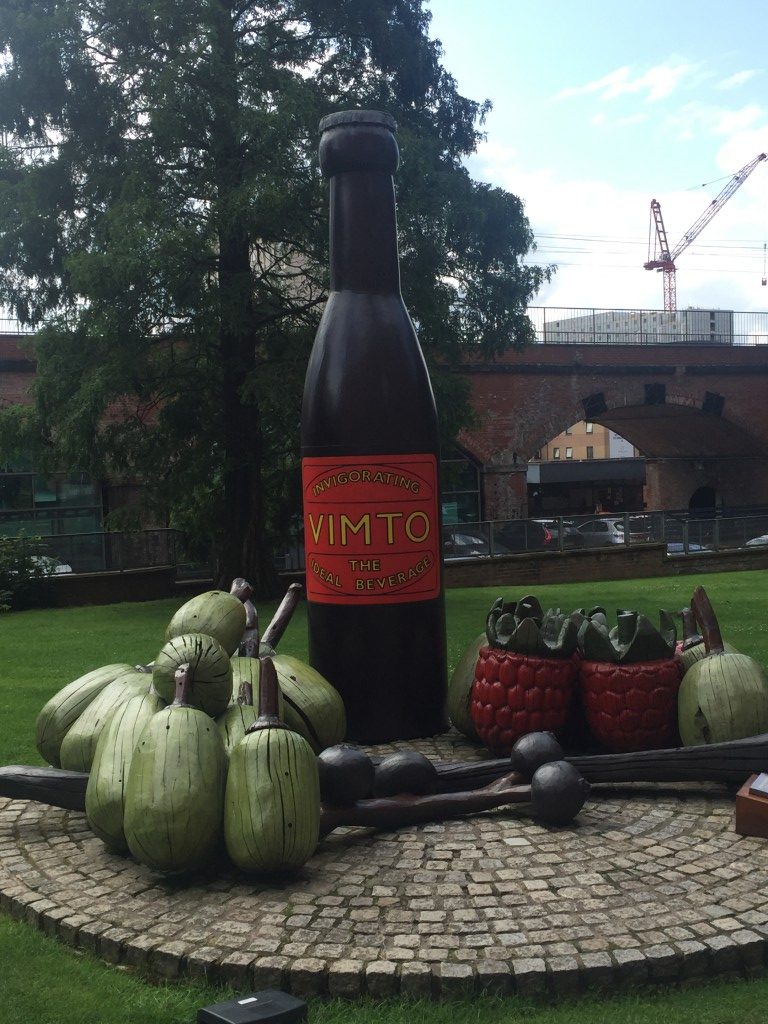
The Arndale Shopping Centre. Love it or hate it?
Manchester’s Arndale centre is a marmite building. You either love it or hate it. I think most of us hate it but have at least some fond memories of how it was when we were younger.
It was built in phases between 1972 and 1979. At the official opening the Mayor of manchester, Dame Kathleen Olerenshaw said disappointingly, “I didn’t think it would look like that.”
During the 80’s a retail company called Arndale owned quite a few shopping centres around the UK. This was the biggest. In 1996 the IRA bomb was detonated right under the bridge that connected the Arndale to Marks and Spencers. Following this the centre was refurbished to look more like it does today.
Interestingly enough, in the 1970’s there was a plan to build an underground railway station in the Arndale. The council had a plan to link Piccadilly and Victoria train stations via an underground line. Nothing ever came of this and today we have the metrolink.
It’s not all bad, the food market is even on our food tour.
Manchester has an out of town shopping centre called The Trafford Centre. The Arndale however is still the busiest of the two.
We visit the Arndale centre on our food tour. In fact the best part of the Arndale is on our food tour. The food market is at the High street entrance, next to Shudehill. This is still a hidden gem in the heart of the city. When we were doing our food tour research we asked a lot of people if they knew this market existed. Suprisingly, a lot of local mancunians had no idea of its existence. Another great reason to take a food tour.
If you’d like to learn more about Manchester and especially the food scene, book a food tour with us. www.manchesterbites.com
For more information about Manchester’s food scene follow our blog at www.manchesterbites.com/blog
